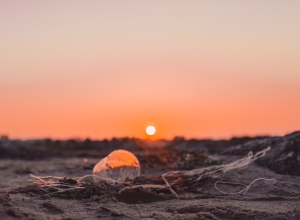"Forever chemicals" in water supply : the need to activate multiple science-policy-practice interfaces for effective action
Global urbanization and global land use are accelerating the degradation of water quality worldwide. In a recent survey of 30'000 individuals across 31 countries, water pollution emerged as the most pressing concern for the future water agenda.1 Chemical pollution, driven by industrial activities, agriculture, and urban runoff, is a major threat to water quality worldwide, introducing a wide array of hazardous substances such as heavy metals, solvents, and persistent organic pollutants into aquatic environments.
Among these contaminants, a group of synthetic chemicals known as per- and polyfluoroalkyl substances (PFAS), or more informally as "forever chemicals", has emerged as a significant concern due to their persistence, widespread presence, and potential health risks. These chemicals have been used since the 1940s in various industrial applications and consumer products such as cosmetics, food packaging, clothes, ski wax, kitchen ware and fire-fighting foams to name a few. More than 10'000 substances have been recognized as PFAS, many of which are water-soluble. This means that when released into the environment, they can migrate into groundwater, lakes, and rivers, ultimately contaminating drinking water supplies.
Numerous monitoring studies have shown that PFAS contamination in tap water is widespread, impacting both developed and developing countries.2,3 While research is ongoing to develop effective remediation techniques, these solutions are often costly and challenging to implement on a large scale.
At the same time, we are learning more about the adverse health effects associated with PFAS exposure, such as increased risks of kidney and testicular cancer, changes in cholesterol and interference with the hormonal system among other impacts.4 However, PFAS toxicity is difficult to characterize because effects vary across species, sexes, life stages, and types of PFAS. Moreover, real-world exposures typically involve mixtures of substances rather than a single compound, and these mixtures can have combined or even greater toxic effects than individual compounds alone.
Increasing number of studies are uncovering the widespread contamination of PFAS. A 2022 study from investigative journalists revealed widespread PFAS pollution across Europe, including in Canton of Geneva,5 and high levels of PFAS were detected in samples of beef meat products in St. Gallen.6 PFAS have been detected in almost all blood or urine samples in American,7 Australian,8 European,9 and Chinese10 cohorts, suggesting that PFAS are ubiquitous in populations across many regions of the world. Unfortunately, data are lacking for developing countries, but available evidence indicates that people in these regions are also exposed, especially in industrialized areas.11,12
How are PFAS regulated ?
Regulation of PFAS is rapidly evolving in the last decade, especially in developed countries.
PFAS have been a known concern for decades in the United States, due to a combination of early scientific awareness, regulatory action, and industry decisions. With early court cases like those led by Robert Bilott against DuPont revealing the dangers of PFAS (brought to fame by the movie Dark Waters), the US became a leader in phasing out the production of some PFAS in the early 2000s. This transition was facilitated by the use of alternative substances, many of which are still PFAS. Because these emerging PFAS are structurally similar to the original PFAS, they pose similar risks to human health and the environment.
There is now a shift, especially in the European Union towards group-wide bans to prevent unsustainable substitutions and better protect public health. The EU's current proposal aims to regulate over 10'000 PFAS as a group, balancing environmental and health concerns with industry feasibility. This approach could lead to broad restrictions and is under active review by the risk assessment and socio-economic committees of the European Chemicals Agency. In contrast, many developing countries lack robust monitoring and regulatory mechanisms, making it difficult to assess and manage PFAS contamination.
Switzerland closely aligns its chemical regulations with the EU to ensure similar protection levels, but has so far taken a more risk-based approach with longer transition periods; however, new rules will further harmonize Swiss standards with stricter EU requirements. Local actions have taken place in Switzerland. For example, Geneva is mapping PFAS contamination in the canton's groundwater and has asked four companies based in the area to investigate the sources of PFAS pollution near their sites.13
Leveraging the Science Policy Practice Interface for effective and equitable action
Addressing the PFAS pollution challenge demonstrates the different levels and levers through which the science-policy-practice interface can and must function.
First of all, there is a need to advance our understanding of health impacts of PFAS in the environment by filling prevailing knowledge gaps in the chemical and biological sciences – which is currently being undertaken by scientists from around the world. As this science advances, identifying the risks and the risk pathways, there must be a flow of evidence-based information to regulatory bodies. For instance in 2022 a Scientists' letter to the World Health Organization – with over 100 signatories from universities around the world – argued for a scientifically defensible health-based approach to setting guidelines on acceptable exposure levels in drinking water guidelines.14
Secondly, to move towards a 'solution space', there is also an important role for science and academia, notably from the social sciences, through disciplines such as policy studies and political science that shed light on the stakeholders, actors and coalitions to study outcomes such as regulatory effectiveness and equity. Indeed, the challenge ahead with PFAS lies primarily in balancing industrial interest with public health and the protection of the environment, while addressing legacy pollution in a cost-effective manner. Moreover, the risk in 'over' regulating PFAS in developed countries is that production and pollution shift to other parts of the world, particularly in developing countries where there is less capacity to monitor, enforce, and regulate. These complex challenges require assessments that capture the multiple dimensions of social-ecological systems and their interactions, and incorporate questions of equity and environmental justice at multiple scales.
In terms of methods, collaborative research projects that include regulators and community leaders and industry have potential to establish communication channels and build trust, fostering shared understanding of the problem, as well as of the potential solutions and the trade-offs.
Finally, PFAS history tells us a story that has been repeated over and over again with environmental crises – that synergy between science, advocacy, and media is essential for building the momentum needed to enact meaningful protections. Campaigners and investigative journalists play a key role in translating complex research and pushing for public action. In France, sustained campaigning from environmental groups and high-profile media investigations like the "Forever Chemicals" project led to a new law passed in early 2025 to restrict PFAS in specific products. While scientists have sounded the alarm about PFAS for decades, the storytelling and exposure by journalists and spokespeople brought the issue to the forefront of public and political debate.
Addressing PFAS pollution highlights the critical need to activate science-policy-practice interfaces on multiple fronts; for researchers and decision-makers work together to ensure timely and informed responses to emerging environmental threats.
Notes
1 https://wwf.panda.org/?13784966/Water-pollution-tops-global-concerns-as-companies-urged-to-invest-in-collective-action-to-address-water-challenges
2 https://pubmed.ncbi.nlm.nih.gov/39787781
3 https://www.nature.com/articles/s41545-023-00274-6
4 https://academic.oup.com/etc/article-abstract/40/3/606/7734619
5 https://foreverpollution.eu
6 https://www.agroscope.admin.ch/agroscope/en/home/news/newsroom/2024/09-03_umweltschadstoffe-in-nutztieren.html
7 https://pmc.ncbi.nlm.nih.gov/articles/PMC5673082
8 https://www.sciencedirect.com/science/article/pii/S0013935124016827
9 https://www.sciencedirect.com/science/article/pii/S1438463922001407
10 https://pubmed.ncbi.nlm.nih.gov/20973108
11 https://pubmed.ncbi.nlm.nih.gov/32540660
12 https://ipen.org/sites/default/files/documents/thailand_pfas_country_situation_report_apr_2019.pdf
13 https://www.ge.ch/document/questions-ressources-concernant-pfas
14 https://greensciencepolicy.org/docs/General/pfas-scientists-letter-to-who-20221110.pdf
Melissa Gomis
Dr. Melissa Gomis is an environmental expert with experience in chemical pollution, climate change, and plastic pollution. After contributing to the Intergovernmental Panel on Climate Change (IPCC) Working Group I, she now works as a Policy Engagement Officer at the Geneva Science-Policy Interface at the University of Geneva. Melissa holds a PhD in Environmental Sciences from Stockholm University, where she focused her research on human exposure to PFAS.
Laura Turley
Dr. Laura Turley is the Senior Science-Policy Manager at the Geneva Water Hub – a Centre of Competence on Water for Peace. Laura holds a PhD in Environmental Governance from the University of Geneva.




